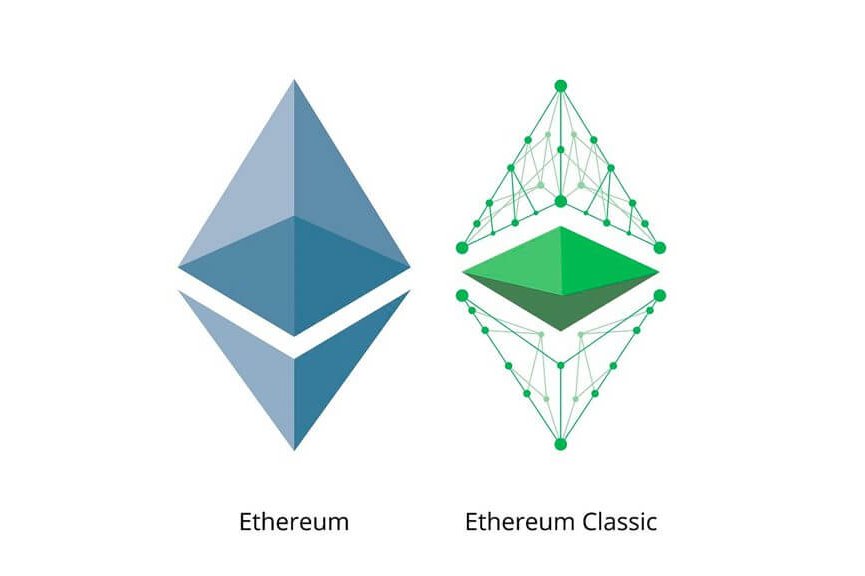As will ethereum grow faster than bitcoin takes center stage, this opening passage beckons readers into a world crafted with good knowledge, ensuring a reading experience that is both absorbing and distinctly original.
This discussion dives into the landscape of cryptocurrencies, comparing the historical growth and market performance of Ethereum and Bitcoin. With technological advancements and real-world use cases at the forefront, we explore how these factors could influence each cryptocurrency’s trajectory in the coming years.
Market Trends and Performance

The cryptocurrency landscape has evolved remarkably over the past decade, with Bitcoin and Ethereum often positioned as the leading assets. Understanding their historical growth rates and market trends can offer insights into their future trajectories.In the last five years, Bitcoin has experienced significant surges and corrections, highlighted by its unprecedented rise to nearly $65,000 in April 2021. Meanwhile, Ethereum has also showcased impressive growth, particularly driven by its role in the decentralized finance (DeFi) space.
A comparative analysis reveals that Ethereum’s growth rate has outpaced Bitcoin’s during certain periods, particularly post-2020, where innovations like decentralized applications (dApps) gained traction.External factors influencing their growth include macroeconomic trends, regulatory developments, and advancements in technology. Bitcoin often reacts to institutional interest and regulatory clarity, while Ethereum benefits from innovation in smart contracts and DeFi projects.
Technological Advancements
Technological differences between Ethereum and Bitcoin are pivotal to understanding their growth potential. Bitcoin operates primarily as a store of value, utilizing a proof-of-work (PoW) consensus mechanism. In contrast, Ethereum’s flexible platform allows for complex smart contracts and decentralized applications.Ethereum’s transition to Proof of Stake (PoS) is a game-changer, promising lower energy consumption and increased scalability. This shift could enhance its appeal to environmentally-conscious investors and users, potentially attracting a broader audience and accelerating growth.Innovations in smart contracts provide Ethereum with unique advantages, enabling automatic execution of agreements without intermediaries.
This could significantly boost Ethereum’s adoption in various sectors, presenting it as a more versatile option compared to Bitcoin.
Use Cases and Adoption
Ethereum and Bitcoin serve distinct use cases in today’s market. Bitcoin is primarily used for value transfer and a hedge against inflation, whereas Ethereum’s primary use cases revolve around smart contracts, DeFi platforms, and NFTs.In terms of adoption, Ethereum has seen increasing integration by businesses, particularly in tech and finance. For instance, companies are leveraging Ethereum for creating decentralized applications and conducting initial coin offerings (ICOs).
Conversely, Bitcoin remains a favorite for institutional investors seeking a digital gold narrative.Industries such as gaming, finance, and supply chain management are integrating Ethereum technology more prominently than Bitcoin. For example, the NFT boom has been largely powered by Ethereum, showcasing its capacity for innovation and adaptation.
Community and Developer Support
The strength of the developer community plays a crucial role in the growth potential of cryptocurrencies. Ethereum boasts a vibrant and engaged developer community, consistently contributing to enhancements and new projects. This active participation fosters innovation and keeps Ethereum at the forefront of technological advancements.Several major projects are currently being developed on the Ethereum platform, including Layer 2 solutions aimed at improving scalability and reducing transaction costs.
This community-driven approach contrasts with Bitcoin, which has a more conservative development philosophy.Community backing significantly influences the growth potential of both cryptocurrencies. Ethereum’s enthusiastic developer base is likely to accelerate its advancements and adoption, whereas Bitcoin’s more static community may limit rapid innovation.
Regulatory Environment

The regulatory landscape surrounding cryptocurrencies is dynamic and can significantly impact their growth trajectories. Currently, both Ethereum and Bitcoin face scrutiny from regulators worldwide, but potential regulations may favor one over the other.For instance, regulatory environments emphasizing the need for transparency and compliance may benefit Ethereum, given its applications in DeFi and tokenization. On the other hand, Bitcoin’s status as a store of value might attract regulatory challenges concerning its use in illicit activities.Legal news has a profound impact on investor sentiment for both assets.
Positive regulatory developments can lead to increased investment, while adverse news can trigger sell-offs. Hence, investors closely monitor regulatory shifts to gauge their potential effects on market dynamics.
Investment Sentiment
Investor sentiment towards Ethereum and Bitcoin varies significantly, influenced by market trends and developments. Historically, Bitcoin has been viewed as a safe haven, attracting investors during periods of economic uncertainty. In contrast, Ethereum has gained traction among those interested in technological innovation and growth potential.Institutional investment is playing an increasingly crucial role in the growth of both cryptocurrencies. Major players are diversifying their portfolios to include Ethereum due to its potential for higher returns driven by its applications in DeFi and NFTs.Statistics indicate that trading volumes for Ethereum have surged alongside its adoption, with a growing demographic of investors engaged in its ecosystem.
For example, younger investors are increasingly attracted to Ethereum’s use cases, while traditional investors often prefer Bitcoin for its established reputation.
Future Predictions
Forecasts for the growth potential of Ethereum are optimistic based on its current metrics and trends. Experts suggest that Ethereum could surpass Bitcoin in market capitalization, driven by its expanding use cases and the increasing adoption of blockchain technology.Many analysts believe that if Ethereum continues to innovate and successfully implements its transition to PoS, it could capture significant market share from Bitcoin.
Future technological advancements, regulatory changes, and increased institutional interest will play essential roles in shaping both cryptocurrencies’ paths.In conclusion, Ethereum’s growth potential appears robust, particularly as it embraces technological innovation and addresses scalability challenges. Investors are keenly observing these developments, anticipating shifts in market dynamics that could redefine the cryptocurrency landscape.
Summary

In summary, the analysis reveals critical insights into the future of Ethereum and Bitcoin. As trends in technology, market adoption, and regulatory environments evolve, the question of whether Ethereum will grow faster than Bitcoin remains a topic of intrigue and speculation, inviting investors and enthusiasts alike to stay tuned for what lies ahead.
Frequently Asked Questions
What are the main differences between Ethereum and Bitcoin?
Ethereum focuses on smart contracts and decentralized applications, while Bitcoin is primarily a digital currency.
How could regulatory changes impact Ethereum’s growth?
Favorable regulations might enhance Ethereum’s adoption, particularly in decentralized finance and NFT sectors.
What role do technological advancements play in Ethereum’s growth?
Technological advancements, like the transition to Proof of Stake, could significantly reduce energy consumption and attract more users.
Is institutional investment more prevalent in Ethereum or Bitcoin?
Currently, Bitcoin tends to attract more institutional investment, but interest in Ethereum is rapidly increasing.
How does community support affect the growth of these cryptocurrencies?
A strong developer community fosters innovation and adoption, contributing to Ethereum’s growth potential relative to Bitcoin.


